








MIDWEEK UPDATE 13 JULY 2016THIS WEEK IN MIDWEEK UPDATE AvClicks Photo Competition……Plan Your Weekend……..Forthcoming Events Aviation News………. Worldwide Incidents and Accidents This Week in Aviation History………Advertising Rate Card  Pilot's Post is proud to launch its "AVclick 2016" aviation related photo competition. By entering your favourite photos, you will not only share your aviation photography passion with thousands of others, you will also stand a chance to win exciting prizes this year. Our prizes for this competition were carefully chosen to suit everyone's aviation interest and that is why we are offering the winner a choice between three different options. For more information go to: www.pilotspost.com/arn0000956 This Week's Four Finalist To vote for your favourite photo click on "Vote for"   Vote for 11-1…………………………Vote for 11-2   Vote for 11-3………………………….Vote for 11-4 Go to www.pilotspost.com/arn0000985 to vote for the June finalist    13: Aero Club safety campaign, Northern Cape. Wednesday 13 July Upington Flying Club evening. 14-15: SAC Nationals New Tempe Airfield, Bloemfontein. Contact Annie Boon e-mail: chunge@mweb.co.za 16: New Tempe airshow. Contact Andre Steyn e-mail: pro@westline.co.za Cell: 093 441 3903 15-17: Taildraggers fly in Nylstroom. Contact Richard Nicholson e-mail: rgn@pcwireless.co.za  22-23: Middleburg airshow. Contact Richard Lovett e-mail: mail@pegasusi.co.za Cell: 082 771 8775 25-31: EAA AirVenture Oshkosh, Wisconsin, USA. Camping on the airfield contact Neil Bowden e-mail: neil1@telkomsa.net. Hotels in Appleton contact Calvin Fabig e-mail: calvin@designer.co.za 27: Chopper gathering at AFB Zwartkop 5 Hangar 11h00 to 19h00. Contact Slade Healy e-mail: slade430@yahoo.com or Matt Richards 27-28: Aero Club safety campaign, Mpumalanga. Wednesday 27 July Nelspruit Flying Club evening. Thursday 28 Middelburg Flying Club evening. 3: EAA Chapter 322 monthly meeting, Dickie Fritz Moth Hall Edenvale. Contact editor@afskies.co.za 5: SAPFA Protea Team Training Brits airfield. Contact Frank Eckard e-mail: frank.eckard@mweb.co.za   5th - 9th: Thank you for joining the NAC Fly Away Team on what promises to be another spectacular four day flying tour of one of the most beautiful regions in our country. You can look forward to exquisite cuisine, beautiful wine farms, languid golden honey, breathtaking views and stunning sunsets. Click here to download your NAC Fly Away Information Pack which contains the schedule of events. Please feel free to contact Deneys Potgieter on +27 82 891 4354 or e-mail deneys.potgieter@nac.co.za should you require any additional information. We can't wait to share this adventure with you! 6: SAAF Museum flying training and open days. Contact 012 351 2342 or E-mail: webmaster@saafmuseum.org 6-7: MISASA Starters Masters - Petit. This competition, like all other Starters Masters, has been structured for the novice with a slant (towards the latter part) for those who have flown comps before. The idea of competition flying is for crew to "enhance airmanship through contest." Contact: Mervyn Reynolds 0737637510 6-8: Lomac Model Aircraft fly-in Rocky's Drift Nelspruit. Phillip Lewis 082 727 8425 or e-mail: phillip@cri.co.za 4-14: SAC Advanced World Championships Poland. Contact Annie Boon e-mail: chunge@mweb.co.za 13: Bethlehem airshow. Contact Stephan Fourie e-mail: fouriesj1491@gmail.com 15-17: Aero Club safety campaign, Eastern Cape. Monday 15 August, Border Aviation Club, East London evening. Tuesday 16 August, 43 Air School Port Alfred. Wednesday 17, Algoa Flying Club Port Elizabeth evening 18-19: SA Landing Championship - Brits. Saturday the 19th is the competition day and for those who want to practice, Friday the 18th is the training day. This competition will be run according to the FAI rules as published on our website and Provincial Colours will be awarded to those who achieve the required standard. Please enter on the SAPFA website at: 21: Grand Rand airshow. Contact Stuart Coetzee e-mail: info@randairport.co.za Tel: 082-4440407 23-25: Aero Club safety campaign, Limpopo. Tuesday 23 August Polokwane airfield club house evening. Wednesday 24 August Tzaneen airfield club house evening. Thursday 25 August Hoedspruit airfield club house evening. 27: Toys for Boys at Tedderfield Air Park. Contact 071 516 2157. e-mail: jhb.parties@gmail.com  SIEMENS MOTOR POWERS EXTRA 330LE AEROBATIC AIRPLANE IN NEAR SILENCE 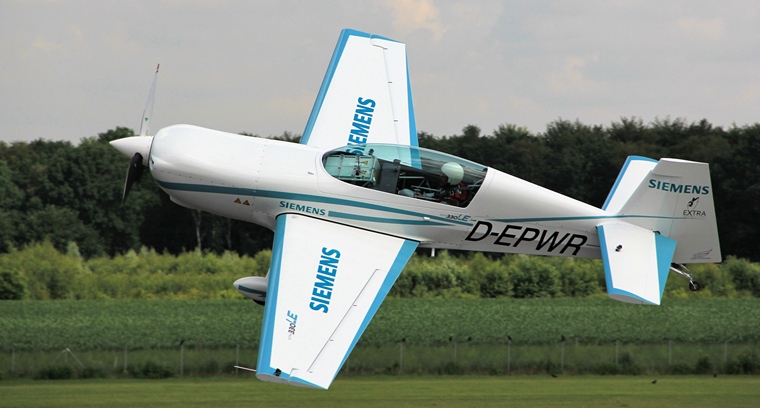 Photos © Siemens 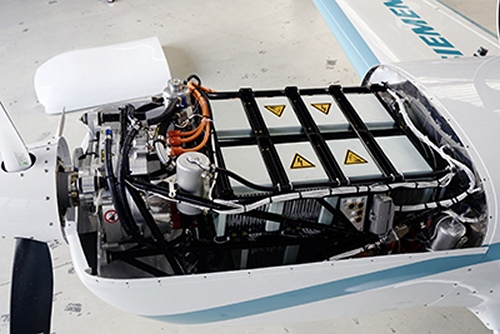 "This day will change aviation," said Frank Anton, head of eAircraft at Siemens' central research unit Corporate Technology. "This is the first time that an electric aircraft in the quarter-megawatt performance class has flown." The Extra 330LE, which weighs nearly 1,000 kilograms, serves as a flying test bed for the new propulsion system. As an aerobatic airplane, it's particularly well suited for taking the components to their limits, testing them and enhancing their design. In addition, the company will be contributing this technology to the cooperative project that Siemens and Airbus agreed to in April 2016 for driving the development of electrically powered flight. Electric drives are scalable, and Siemens and Airbus will be using the record-setting motor as a basis for developing regional airliners powered by hybrid-electric propulsion systems. "By 2030, we expect to see initial aircraft with up to 100 passengers and a range of around 1,000 kilometres," explained Anton. RARE TREAT: MULTIPLE SPARTAN EXECUTIVE 7WS TO ATTEND EAA AIRVENTURE OSHKOSH 2016 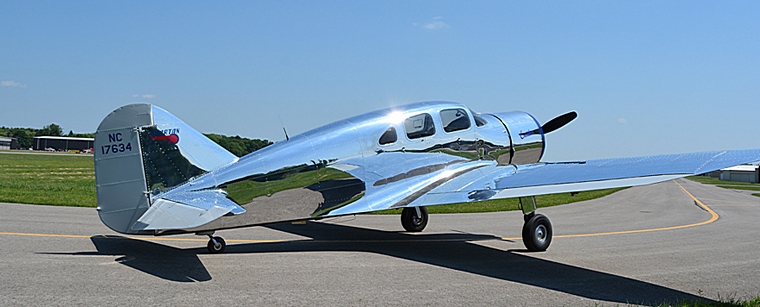 Photo © AirVenture From 1936 through 1940, 34 7Ws were produced. Today, 20 survive and many are rarely flown. It is uncommon to see so many in one place, as the production was spread out over five years and owners are scattered across the U.S. and U.K. This gathering may be the first time since original production that this number of 7Ws have been in one place at the same time. Six are flying in specifically for AirVenture, joining the one on permanent display at the EAA AirVenture Museum. Spartan Executive 7W owner Jim Savage said, "The Spartan owners are thrilled to be able to have this 80th Anniversary Gathering at AirVenture 2016. We look forward to sharing the histories of each aircraft with vintage enthusiasts from around the world." The majority of civilian aircraft at the time were built using fabric coverings and wooden spars and ribs. The 7W featured innovative technology with an all-metal fuselage and a retractable undercarriage, powered by a 450-hp Pratt & Whitney Wasp Jr. engine. Spartan Aircraft Company founder William Skelly wanted to develop an aircraft that was fast without skimping on comfort and luxury. The 7W has a cruising speed of 200 mph and a range of about 1,000 miles, which was impressive for that era. The aircraft's excellent performance allowed the 7W to take part in the 1939 Bendix Trophy Race. Arlene Davis raced from Los Angeles, California, to Cleveland, Ohio, taking fifth place with an average speed of 196.8 mph. Spartan Aircraft Company was based in Tulsa, Oklahoma, which was the oil capital of the world at that time. Most of the original purchasers of the 7W were oil company executives. Other notable owners included Paul Mantz, Howard Hughes, and King Ghazi of Iraq. CHINA INDUCTED ITS LARGEST INDIGENOUSLY-BUILT TRANSPORT AIRCRAFT 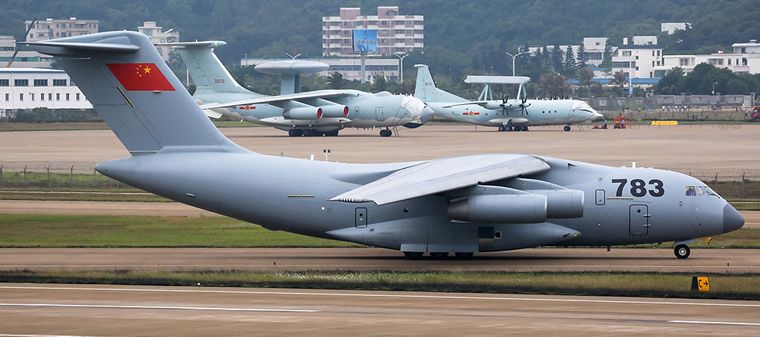 Photo en.wikipedia.org "The Y-20 entering into service marks a crucial step for the Air Force improving its strategic power projection capability," Air Force spokesperson Shen Jinke said. With a maximum take-off weight of 200 tonnes, the Y-20, which officially joined the PLA Air Force in Chengdu, is ideal for transporting cargo and personnel over long distances in diverse weather conditions, state-run Xinhua news agency reported. The Air Force needs more and better transport to better fulfil its military responsibilities, including safeguarding national security as well as domestic and international rescue and relief work, Shen said. The Air Force has provided aid and delivered relief supplies to Pakistan, Mongolia, Thailand, Nepal and other countries as they were hit by disasters in recent years. The indigenously designed and developed Y-20 took its maiden flight in January 2013 and made its debut at the 10th China International Aviation and Aerospace Exhibition in November 2014, Chinese officials said. The Y-20 is comparable to the Russian-made IL-76 and the US C-17. PLA officials earlier said Y-20 is more advanced than the IL-476. TheY-20 which made its maiden flight in January 2013 and underwent trials runs, including in the rugged Tibetan terrain, will make troop deployment easier, enabling the military to act more promptly and respond to emergencies in a better manner, officials said. It is also regarded as a major breakthrough in military aviation technology for the PLA which is more reliant on Russian-made planes so far. Besides manufacturing J-15, China's first-generation multipurpose aircraft for the newly-built aircraft carrier, Chinese military has tested J-31, a fifth generation aircraft, and stealth fighter J-20, which PLA officials claim to be comparable with US versions. 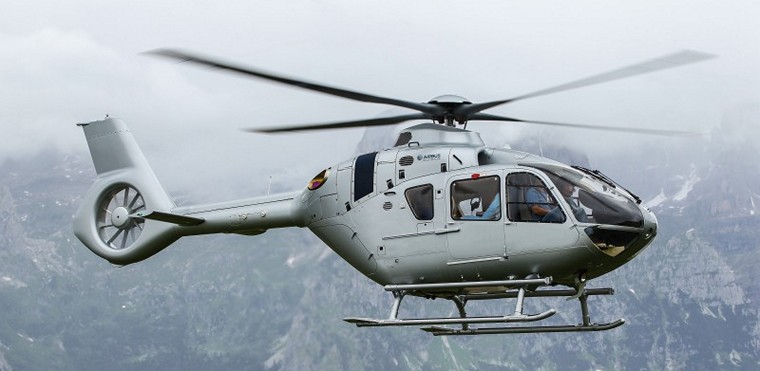 Photo © Airbus The contract signing ceremony was held at the Great Hall of People, in the presence of Chinese Premier Li Keqiang and the visiting German Chancellor Angela Merkel, marking a significant milestone in the scene of local general aviation industry with this €700 million sales contract and the industrial partnership of a final assembly line (FAL) in Qingdao. The FAL is expected to start operations by 2018, to assemble 100 H135s over the next 10 years. "We are extremely pleased with the progress of this partnership between Airbus Helicopters and our Chinese partners. With the further opening up of the Chinese skies and the increasing growth in the civil and parapublic segments, China is gearing up to be the biggest market for helicopters in years to come," said Norbert Ducrot, Head of Airbus Helicopters China and North Asia region. "With their inherent versatility and reliability, these 100 H135s will be best suited to meet the soaring demand in China". The H135 has gained popularity in China in recent years, performing various parapublic missions such as helicopter emergency medical services (HEMS), law enforcement, firefighting, patrol command, and search and rescue (SAR), as well as corporate missions such as tourism and transportation. The rapid development of offshore wind power generation industry in China also presents a new market segment for helicopter operations. The H135 is an excellent solution for these missions thanks to its compact external dimensions, a comparatively small rotor diameter, an optimised cabin size and ideal twin-engine performance. Together with the growth of other segments, a potential demand of 600 light twin-engine helicopters is expected in the next 20 years. To date, nearly 1200 H135s are delivered globally and in operation, having logged more than three million flight hours. 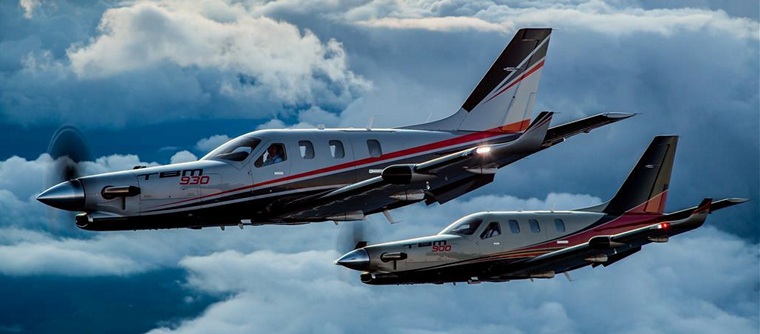 Photo © TBM Participating in the July 25-31 event - organized annually by the Experimental Aircraft Association (EAA) at Wittman Regional Airport in Oshkosh, Wisconsin - will be a 2016 model year version of the TBM 900 with its system enhancements, and two of the new TBM 930 versions with upgraded cockpits incorporating touchscreen controls. Daher has integrated the company's e-copilot® function on Model Year 2016 aircraft for both the TBM 900 and TBM 930 versions, incorporating the following systems and functionality for reduced pilot workload: - A sensor and angle of attack (AOA) calculator, providing angle of attack information on the primary flight display; - Electronic stabilization and protection systems (ESP) and Under Speed Protection (USP), which are connected to the AOA computer. These electronic monitoring and stability augmentation systems assist the pilot in maintaining the aircraft in a stable flight condition when flight parameters are exceeded; - An emergency descent mode (EDM) in the autopilot, which places the aircraft in automatic descent to a safe altitude of 15,000-ft. in the event of cabin depressurization and lack of pilot response; and - New voice alerts - providing notification on stall, overspeed, landing gear status and oxygen mask use - which replace aural sounds for better warning identification. One of the TBM 930s at EAA AirVenture Oshkosh also is outfitted with new cabin interior elements that are to be available beginning next year. "AirVenture is a truly great aviation happening, and we are pleased to bring our TBM 930 and TBM 900 for their first appearances at this year's Oshkosh event," commented Nicolas Chabbert, Senior Vice President of the Daher Airplane Business Unit. "For many TBM customers, flying to Oshkosh is a part of the TBM experience, and we look forward to welcoming many of them at what now constitutes the largest gathering of a turboprop-powered aircraft product line at the annual fly-in." 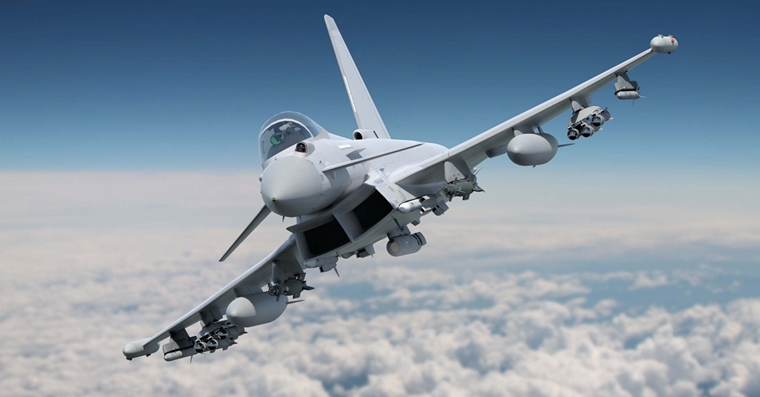 Typhoon with full phase 3 enhancement weapons. Photo Eurofighter . The display will demonstrate Typhoon carrying four Meteor Beyond Visual Range Air to Air missiles, two Brimstone 2 low collateral precision strike weapons (consisting of three Brimstone missiles each outboard wing pylon), two ASRAAM missiles and two Paveway IV laser guided precision weapons. Nat Makepeace, BAE Systems Typhoon Experimental Test Pilot, said: This is one of the first times a Typhoon aircraft has flown with this weapons fit and it demonstrates the significant milestones which have been achieved towards integration of these new capabilities on to Typhoon, providing the combat pilot with a full range of capabilities. Typhoon provides air forces with a highly capable and extremely agile multi-role combat aircraft, capable of being deployed in the full spectrum of air operations. This display will also demonstrate is that Typhoon, even with this weapons fit, loses none of the incredible agility and manoeuverability for which it is known. A significant contracted programme of work is currently being conducted by the Eurofighter Partner Companies, with the support of MBDA, Eurofighter GmbH and the UK Ministry of Defence, towards the integration Phase 2 and Phase 3 Enhancement packages for Typhoon. Phase 1 Enhancements were delivered on to the aircraft last year, underlining Typhoon as a high-end multi-role weapon system with unmatched air-to-air capability and the integration of Paveway IV for precision air-to-surface operations. With Phase 2, Typhoon will gain a deep attack capability through the integration of the Storm Shadow air-to-surface deep strike missile and a beyond visual range capability through integration of Meteor. Phase 3 Enhancements will introduce a low collateral precision strike air-to-surface capability to Typhoon through Brimstone.  Photo © Embry-Riddle Four teams consisting of female student pilots and flight instructors represented Embry-Riddle's residential campuses in the flight competition that kicked off June 21 at the university's Prescott, Ariz., campus and ended June 24 in Daytona Beach. Winners of the 2,716-mile race featuring more than 100 women were announced Sunday during an awards banquet in Daytona Beach. Another first in the university's history included an independent team (Team Bernoulli) featuring two Daytona Beach Campus College of Engineering faculty Naiara Petralanda and Virginie Rollin who finished third overall in their first attempt at the race. Embry-Riddle Prescott's team of Hannah Rooney and Rachel Hutzell finished in seventh place in collegiate competition and 16th overall, and the team of Shelby King and Hannah Burright were ninth in collegiate and 23rd overall. Embry-Riddle Daytona Beach pilot Sarah Wendt and co-pilot Sojung An as the Riddle Racer Blue Team received numerous nods in the leg/stop competition and finished 16th in collegiate and 42nd overall after having to make a safety stop for maintenance issues. "We're incredibly proud of our pilots," said Dr. Karen A. Holbrook, Interim President of Embry-Riddle, which was the start and terminus host sponsor of this year's race. "To be part of an event such as this that empowers and inspires women is an honor, and it exemplifies the core values of our university - that there are no limits to what you can achieve." With a theme of "Collegiate Cross Country," the annual race was a salute to aviation programs at universities across the country. Other universities that finished in the top 10 in the collegiate division were Indiana State University, University of North Dakota and Liberty University. As Embry-Riddle celebrates its 90th anniversary this year, it also marks 20 years since a similar route for ARC was run between the two campuses in 1996. One of this year's stops along the route was in Albuquerque, N.M., where Embry-Riddle Worldwide offers courses at Kirtland Air Force Base. The women were selected for this prestigious competition by Embry-Riddle College of Aviation administrators from each campus on the basis of their piloting skills, their competitive spirit and their knowledge of aviation, safety, navigation, meteorology and crew resource management. All Embry-Riddle teams flew Cessna 172 aircraft from the university's fleet. Nearly two dozen female pilots with connections to Embry-Riddle as former faculty, graduates of all campuses including Embry-Riddle Worldwide and current students participated in this year's race. Current sophomore and aeronautical science major at the Daytona Beach Campus, Cara Baldwin also competed for the fifth time as part of team Baldwin Family Flyers with her grandmother and aunt. The three generations of women pilots received numerous awards at Sunday's banquet. In previous races, Embry-Riddle racers have delivered impressive results. A Daytona Beach team has participated every year since 2007, finishing four times previously as the No. 1 team in the collegiate division, and until this year, had finished as high as No. 2 in the overall competition twice. Prescott has taken part every year since 2009, ranking as high as No. 2 in the collegiate division and No. 4 last year in the overall competition.  USA, Denver: A Denver-bound Delta Airlines flight from Atlanta was diverted to Tulsa after at least a dozen passengers became ill due to carbon monoxide ingestion. The effected passengers were taken to an area hospital to be evaluated.. They were all found to have had elevated carbon monoxide levels in the blood. Another passenger was also treated for hypertension.  15 JULY 1952 A pair of USAF H-19 Chickasaws makes the first transatlantic crossing by helicopter  Sikorsky H-19 Chickasaw. Photo U.S. Army / commons.wikimedia.org Development of the H-19 was initiated privately by Sikorsky without government sponsorship. The helicopter was initially designed as a test bed for several novel design concepts intended to provide greater load-carrying ability in combination with easy maintenance.  Photo Sgt. Robert E. Kiser, USMC / commons.wikimedia.org  H-19A Air Force Serial No. 51-389 landing at Prestwick, Scotland after first transatlantic crossing  For a free no obligations quote email info@pilotspost.com  |
                         |
 |
 |

Copyright © Pilot's Post PTY Ltd
The information, views and opinions by the authors contributing to Pilot's Post are not necessarily those of the editor or other writers at Pilot's Post.